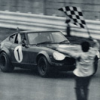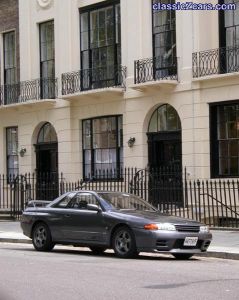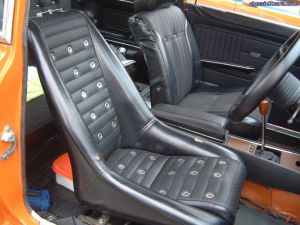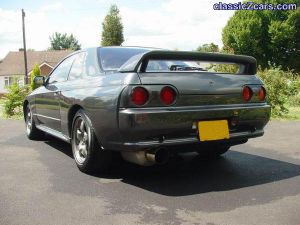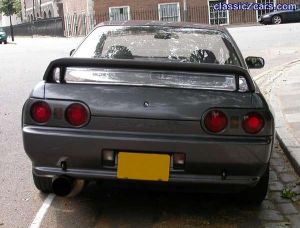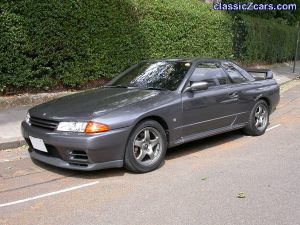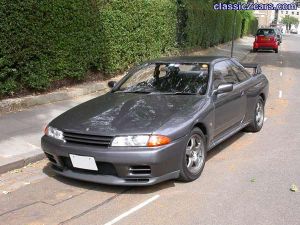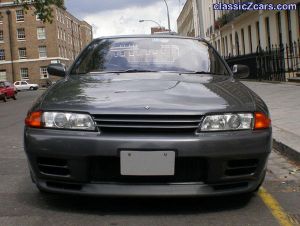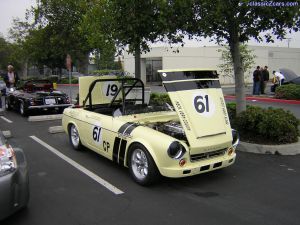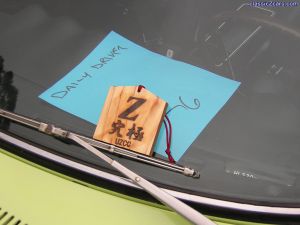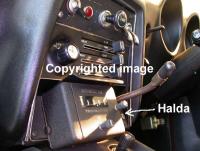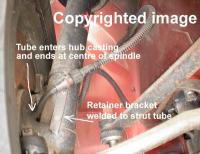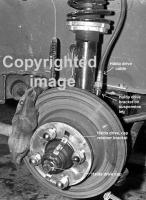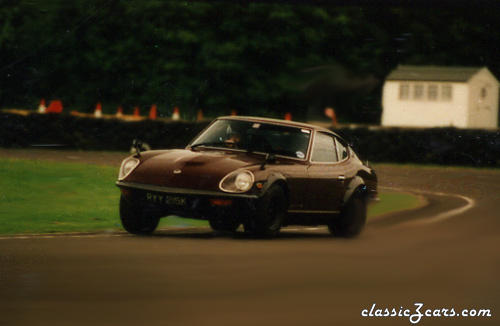Everything posted by HS30-H
-
Engine Bay Inspection Lamp Markings
@ 26th-Z. Dazza, Would like to see those Japanese characters if you can take a photo of them and post it? Cheers, Alan T.
-
R32 GT-R
Ben, if you come over to London ( and bring an International Driver's License with you ) you can drive both the ZG and the GT-R.
-
R32 GT-R
-
Engine Bay Inspection Lamp Markings
Confused as a result of having it explained "so well"?
-
Big Sam
Hi halz, Maybe the best thing to do would be to contact the owner - Nick Howell. He is a member of this forum and has the username "Nick H". I'm afraid that there is nothing on the web - to my knowledge - that gives current or completely accurate information on the car. That's why it would be best to ask Nick himself. I'm afraid that much of the published historical information about the car ( or more accurately, cars plural ) conflicts in detail. It can be very confusing and somewhat annoying. For example, the second bodyshell used on the car ( that's the current bodyshell ) has often been described as being the car that Shekhar Mehta used on the 1972 Safari Rally. Unfortunately, this is impossible as that car ( carnet registration number "TKS 33 SA 4540" ) was RHD and the current shell used on "Big Sam" was originally LHD, and only converted to RHD after it was acquired by Bob Gathercole. The car actually has an "HLS30" ( ie LHD ) VIN prefix. They cannot be the same shell. The formerly used bodyshell ( that of Rauno Aaltonen's 1970 RAC Rally Works entry ) has been described as having the VIN prefix "HS30LW" ( the "LW" part - supposedly - standing for "Light Weight" ), which is total bollocks of course. The VIN prefix on that car was just "HS30".......... Nick has been digging into the history and intrigue of the car lately, and I've been corresponding with him about it. I think I have a very good idea about what the current bodyshell's last two events in Works hands were, but I'll leave it to Nick to update interested parties on that - as its his car. It would be refreshing to see an accurate and properly researched history of the car ( cars ) published one day. It certainly deserves it. Alan T.
-
Engine Bay Inspection Lamp Markings
Add 25 to get the equivalent Western year from a Japanese Showa-era date: 1969 = Showa 44. 1970 = Showa 45. 1971 = Showa 46. 1972 = Showa 47. 1973 = Showa 48. Showa 43 would be 1968, so not very likely to be seen on a Z - but on the other hand the "Trouble Light" / "Wander Light" / "Inspection Lamp" was used on other Nissan models too - so you never know........... The reign of Emperor Showa started in 1925 ( Showa ichi-nen, or Showa year one ) and finished with his death in 1989. 1989 was the first year of Emperor Heisei. We are in Heisei 15 now ( I think ).
-
Datsun competition bucket
Ben, The 87000-U0175 "Datsun Bucket" seat ( Datsun Bucket being just a nickname - not an official term ) was not specific to the 432R. The 432R came from the Factory fitted with the lightweight cloth-covered FRP seats made by 'Ikeda Bussan' ( and have been known by that name in Japan ever since ). The Ikeda Bussan seat was more commonly fitted to the true Works race and rally cars, and the Datsun Bucket was offered in the Sports Option lists for many models as Nissan's generic sports seat. The U0175 was used on many of the 4-cylinder Works rally cars, and was manufactured over quite a long period - with some changes along the way ( hence the difference you noted in the headrest attachment ).
- R32 GT-R
- R32 GT-R
- R32 GT-R
- R32 GT-R
- R32 GT-R
- R32 GT-R
-
Big Sam
Nissan achieved more than 200 BHP themselves on all of the Works rally cars which used the L24 engine block, and in fact its fairly simple to get this kind of power. Nothing much to do with 'Samuri' there, especially as the cars we know as "Big Sam" started out with what were - essentially - Works rally car engines. The currently fitted engine is not a Spike Anderson-built unit, and does not utilise an L24 crankshaft. Tim Riley has to take credit for the car's current build and preparation, which is to an excellent standard - like most of his work. He's living and working in New Zealand at present.
-
SSS_Coupe
-
SRL31100004_Debut
-
My_Ultimate_Z_Membership
-
'Works' hubs
-
'Works' hubs
Here's the view from the back. The bracket that holds the hard outer tube for the Halda drive is welded to the strut tube. The bracket wraps around the strut at the top, and goes straight down underneath. If you opened it up it would be a simple T shape. The outer tube passes through the spindle casting and joins the centre line of the spindle itself, so that the inner cable lines up nicely with the centre of the spindle. The inner cable then simply passes out of the spindle and into the retainer cap on the end of the bearing cover, where it is fixed in place. This bearing cover effectively drives the inner cable at wheel speed through its own rotation.
-
'Works' hubs
Difficult to explain properly without a picture, so please see the attached: The wheel rotates the hub, so all you have to do is connect the inner cable to the centre of the rotating hub, and fix the outer casing of the cable to the leg. You don't need any spur gears or worm drives that way. A picture saves a thousand words, so maybe this will help:
-
Castle Combe circuit
Hi Brian, The original photo is tiny ( it was blown up from a contact sheet ) so its not going to be clear enough to blow up as a poster I'm afraid. I think it will be much too grainy. PM me your e-mail address and I'll send it over to you, but I don't think it will be good enough to print.
-
'Works' hubs
Mike ( Zedrally ), Most of the Works cars used twin mechanical Haldas ( not electronic ) and drove them off the front hubs. The front spindles were drilled for the cables, and a proper connector was attached to each of the front legs. In many cases one of these cables was only used as a 'spare', and one of the Haldas was driven off the speedo cable via a tee piece - as you mention. They did not use the rear wheels or transmission for the main Halda drive because this would not be accurate ( wheelspin ). Some of the navigators had their own preferences for connection and layout of their 'office equipment'. Steve, I've never seen or heard of alloy / Mag front hubs on Works 240Z / 260Z rally cars. All the ones I have ever seen have been standard based, and Nissan certainly didn't officially homologate any alloy ones for competition use. You are right though, they would offer a good saving in unsprung weight. However, Nissan seemed to be concentrating on durability rather than lightness for most of their rally parts of the time. Is it possible that these hubs you have been offered are a custom-made ( private ) part? Its the kind of thing that would be easy to make, or to adapt from another car ( like the Escort ally hubs ). The 'standard' brake setup for Works rally 240Z / 260Z cars was the Sumitomo 'MK63' four-pot caliper, with vented discs. These were cast iron, and were very heavy! Later Works cars also had these fitted to the REAR of the car. There was a thread about these a little while ago, and a search for 'MK63' should throw it up. Cheers, Alan T. Alan T.
-
'Works' hubs
Hi Steve, I'm intrigued. I've never heard of 'Works' hubs for the Z, except the types fitted to the Works rally cars. These were - of course - usually attached to full Works suspension legs ( Tokico, Ampco or Atsugi gas-filled legs with all the special Works-type mods ) but I don't think they had heavy-duty castings, bearings or studs. Main thing that singled out the Works-type front hubs was the fact that they were modified to drive Halda cables off BOTH front hubs on the rally cars. What are the ones that you have access to? Cheers, Alan T.
-
Z racks
Hi Steve, Rack ratios changed in August 1973 according to the official Nissan data for the RHD models that I have to hand. The 2+2 ( 2/2 in Japan ) models also had their own specific Steering Rack part number from October 1973. There was also an 'Optional' Steering Rack available for the European market cars up to July 1973, which I presume also had a different ratio. As you have noted, it seems that the ratios became progressively 'slower'............ None of these to be confused with the shorter Option Steering Knuckles, which effectively 'quickened' the steering ratio by changing the rack's leverage on the hubs. Hope that's of use. Cheers, Alan T.
-
5spd gearbox codes
You are welcome, Jim. If there is no other way of identifying what you have, and you are forced to do a manual tooth count of the gears and counter-gears, then give me a shout. I have all the data for this from official Nissan publications. Its a horrible job, but its the only way to make 100% sure of what you have got. Good luck, Alan T.




